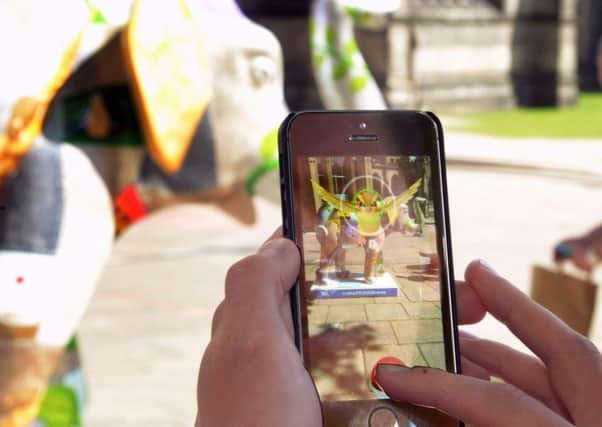What Augmented Reality will bring us when the Pokemon fad fades


Virtual Reality has been around for a few years now, but it has taken a lowering of the bar to the level of a children’s cartoon to make it truly catch on. Albert Einstein was sadly prescient when he observed that technology would one day surpass human interaction and create a generation of idiots. (Sadder still, most of the quotes now ascribed to Einstein are no more than internet myths.)
The Pokemon Go game that has arrested the attention of so many this summer is technically Augmented Reality (or AR) rather than Virtual Reality, since it projects an artificial environment onto a real one - in this case using data generated from Google Maps. When you hold your phone up, your camera places an animated character onto the scenery.
Advertisement
Hide AdAdvertisement
Hide AdObviously, it’s a fad, and one that will evaporate along with the warm weather. But the possibilities for augmented reality are more far-reaching. Apps like Aurasma and Layar, for instance, can “project” extra layers onto the pages of a magazine, turning static advertisements into video commercials.
Of more practical benefit, an AR add-on to the popular Google Translate app can recognise blocks of text and translate them in real-time into your choice of language; all you need do is point your phone’s camera at the text. Language packs can be downloaded so you can use the app on holiday without a network connection.
Mybrana falls somewhere between the frivolous and the practical, letting you overlay graphics, stickers and animations over your photos and videos, which you can then share with friends. Likewise, Inkhunter and Tattoo Ink Hunter can visualise what a given tattoo would look like on your body before it becomes indelible.
Th crayon manufacturer Crayola has also got in on the act, with an app called Color Alive, which brings children’s drawings to life when they’ve finished creating them; while Field Trip overlays tourism details on to a map of your current or chosen location. This has endless possibilities for museums and other attractions to develop guided tours without the need to invest in custom hardware. Wikitude has similar functionality, letting you input a search term and then displaying relevant matches onto a picture of your surroundings. Saying “bus stop”, for instance, would make all the nearby stops flash up on your screen.
Advertisement
Hide AdAdvertisement
Hide AdDesigning your home is another obvious use for AR: instead of sketching plans of your rooms you can scan your camera across them and use an app like Snapshop to see how they would look with different furniture.
Theodolite is a more specialised implementation of the same idea, using your phone’s GPS, compass and accelerometer to measure your surroundings scientifically - while Star Walk does a similar job on the night sky.
These are just the beginning. The car maker Hyundai is about to launch an AR app that will recognise the components under your bonnet and show you how to service them - and in the future the technology may be built into the cars themselves.
All of which will soon make the Pokemon phenomenon as passé as the previous summer fad for pouring ice buckets over people.